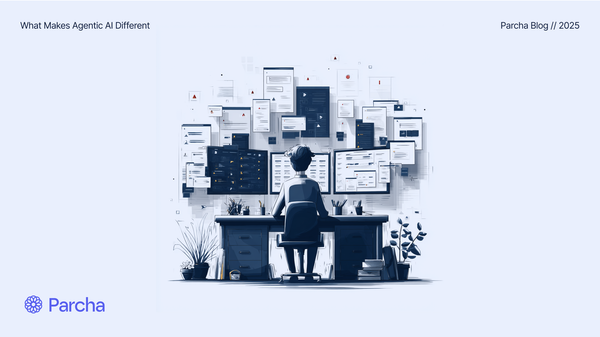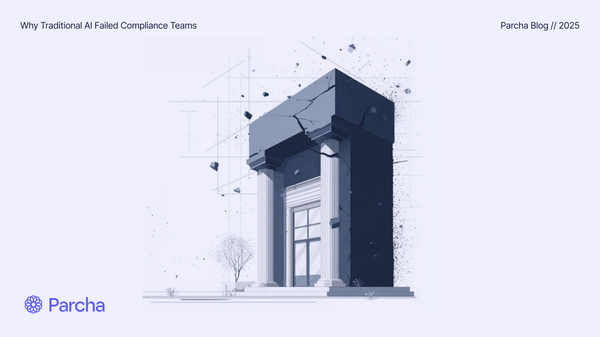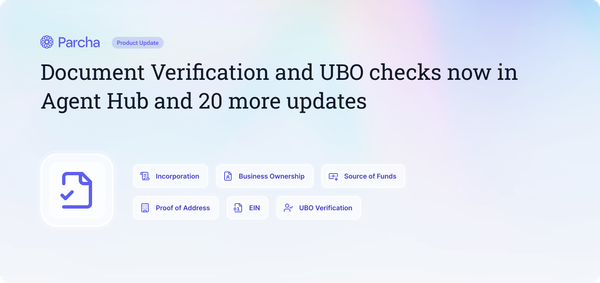The AI Pricing Revolution
Why SaaS is Shifting to Usage-Based Models

Welcome to The Guide To AI by Parcha!
I'm AJ, CEO of Parcha. In this newsletter, members of the Parcha team share our insights into AI and how it’s changing the world around us. Occasionally, we also share updates about what we’re building at Parcha. Today, we're diving into a topic that's been on my mind lately: how AI fundamentally changes the economics of SaaS and why I believe it will usher in a new era of usage-based pricing.
If you enjoy reading Parcha’s Guide to AI, don’t forget to subscribe below!
The shift to usage-based pricing, spurred by AI-native products, has enormous implications for founders, product leaders, and anyone involved in the SaaS industry. So, let's break it down and explore what it means for the future of software pricing.
The AI Pricing Paradox
Here's the fascinating paradox at the heart of this shift: As AI becomes more integral to SaaS products, the cost to serve each customer increases with usage. This flies in the face of traditional SaaS economics, where marginal costs typically decrease as you scale.
Why is this happening? It all comes down to compute power. AI models, especially large language models (LLMs), are incredibly resource-intensive. Every time a user interacts with an AI feature, it costs the provider real money regarding GPU usage. This creates a major problem for the subscription-based pricing model that's dominated SaaS for the past decade. Suddenly, your power users become your least profitable customers. It's simply not sustainable.
The Rise of Usage-Based Pricing
The solution to this paradox is usage-based pricing. It aligns costs with revenue, ensures profitability, and provides a better experience for customers who only pay for what they use. We're already seeing this play out in the market:
- OpenAI's pricing for GPT-4 is purely usage-based
- Google's new AI features for Workspace will likely come with usage limits
- Even GitHub Copilot, while subscription-based, has usage caps
But it gets fascinating here: We believe this shift will extend far beyond "AI-first" products. As AI capabilities become table stakes across all SaaS categories, usage-based pricing will become the norm.
Implications for the SaaS Industry
As more and more products add AI features, this shift has enormous implications for the entire SaaS ecosystem:
- Pricing Strategy Overhaul: SaaS companies will need to rethink their pricing strategies completely. The days of simple "per user, per month" models are numbered.
- Evolution of Sales and Marketing: Say goodbye to "unlimited" plans. Sales teams will need to learn how to sell value based on usage, not just seats.
- Customer Success Becomes Critical: Driving profitable usage becomes even more important. Customer success teams will play a crucial role in ensuring customers are extracting maximum value.
- Product Development Focus: Product teams will need to prioritize features that drive valuable usage, not just engagement for engagement's sake.
- Financial Modeling Challenges: Finance teams will need to get comfortable with more variable revenue streams and potentially more complex forecasting.
What This Means for Founders and Product Leaders
If you're building a SaaS product today, especially one with AI features, it's crucial to start thinking about how you might transition to a usage-based model. Here are a few steps to consider:
- Analyze Your Costs: Understand the true cost of serving each customer, especially as it relates to AI feature usage.
- Model Different Scenarios: Experiment with different pricing structures and see how they impact your unit economics.
- Talk to Your Customers: Gauge how receptive they might be to a usage-based model. You might be surprised by the positive response.
- Start Small: Consider introducing usage-based elements alongside your existing pricing model before making a full transition.
- Invest in Usage Analytics: You'll need robust systems to track and bill accurately based on usage.
The Road Ahead
The shift to usage-based pricing won't happen overnight, and it won't be without challenges. At Parcha, we’ve been experimenting with usage pricing from day one. It requires some upfront education to help our customers understand that our product should be compared to their headcount costs, not their SaaS budget. But we think it’s worth it because usage-based pricing better aligns with our costs and allows us to expand with our customers without upselling more seats. In return, customers have more control over their spending and will only pay for the value they extract from our product. For SaaS companies, it's an opportunity to build more sustainable, profitable businesses aligned with the actual costs of delivering AI-powered software.
What do you think? Will AI drive a usage-based pricing revolution? Or am I off base here? I'd love to hear your thoughts in the comments.
Until next time, thanks for reading Parchans!
-AJ
Thanks for reading The Guide to AI by Parcha! Subscribe for free to receive new posts and support my work.





